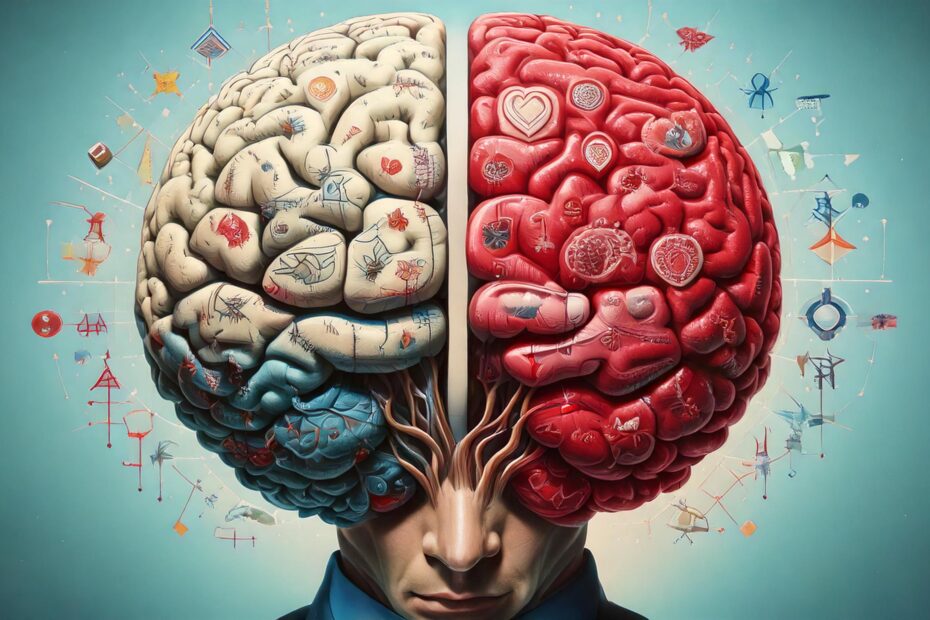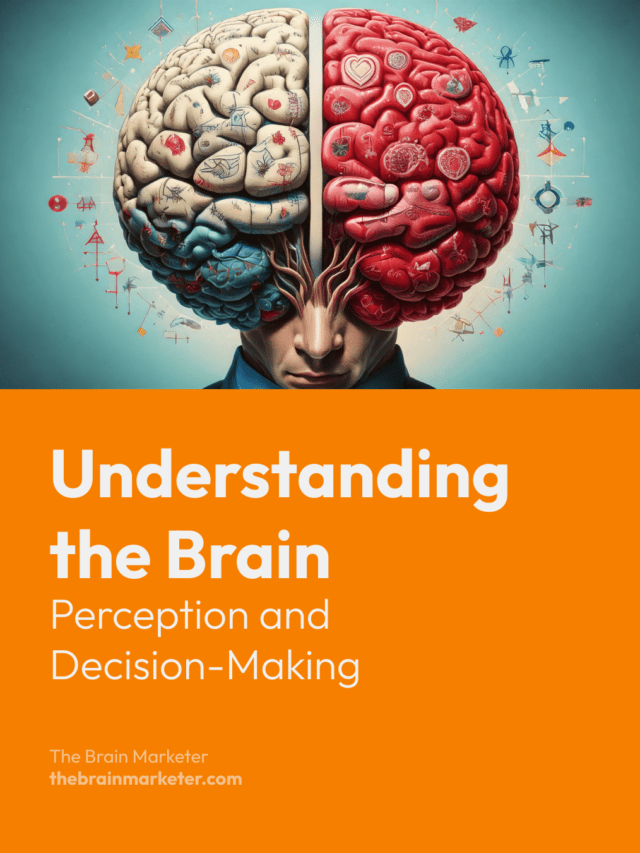Introduction
The human brain is at the heart of every decision we make, from choosing a product to forming an emotional connection with a brand. In marketing, understanding how the brain processes information can offer critical insights into how to design advertisements, websites and campaigns that align with how our minds work. This article explores the different hemispheres of the brain, its cognitive biases, and how these factors influence consumer behavior.
🎙️ Unpack the Topic with this Podcast
Left Brain vs. Right Brain: The Dual Approach to Thinking
The brain is divided into two hemispheres, each of which controls different functions and ways of thinking. Understanding these distinctions helps marketers tailor their messaging to engage both logical reasoning and creative inspiration.
1. The Left Hemisphere: Logical and Analytical Thinking
The left hemisphere is the center of linear thinking, focusing on language, logic, and mathematics. When consumers process information analytically, such as comparing product features or weighing costs and benefits, the left side of the brain is primarily engaged.
- What It Does: The left brain processes information in a step-by-step manner, allowing consumers to analyze details, understand facts, and form logical conclusions.
- Marketing Strategy: For logical decision-making, marketers should focus on clear messaging and data-driven content. For example, price comparisons or detailed product specifications appeal to the left hemisphere.
2. The Right Hemisphere: Creative and Conceptual Thinking
In contrast, the right hemisphere governs conceptual thinking, creativity, and inspiration. This side of the brain responds to art, music, and visuals, making it crucial for marketing campaigns that aim to evoke emotions and inspiration.
- What It Does: The right brain is responsible for processing big-picture ideas and engaging with abstract concepts, such as brand stories, emotional connections, and visual aesthetics.
- Marketing Strategy: To engage the right brain, brands should emphasize creative visuals, storytelling, and emotional appeal. Advertisements that feature artistic imagery, inspirational messaging, or creative storytelling are more likely to resonate with the right hemisphere.
What the Brain Loves: Familiarity, Emotion, and Security
The brain thrives on familiarity, emotional connections, and safety. When a consumer recognizes a familiar brand, product, or image, it triggers positive reactions in the brain, leading to trust and preference. On the other hand, the brain is also wired to detect potential dangers, especially in unfamiliar situations or with unknown entities.
- Humans and Animals: The brain is programmed to respond to other humans and animals. For instance, a dog might be perceived as a potential danger by the primitive brain unless its body language—like wagging its tail or lowering its ears—signals otherwise.
- Familiarity: The brain loves familiarity and recognition. For example, seeing a familiar luxury car can elicit a stronger response than viewing abstract art because the brain is more comfortable processing recognized elements.
- Safety and Comfort: The brain is also highly attuned to security, and familiar symbols or signs of safety can significantly affect purchasing decisions. Marketers can use trusted symbols (like certifications or safety guarantees) to create feelings of trust and security.
The Brain’s Cognitive Shortcuts: Why Context Matters
The brain is inherently lazy, meaning it prefers to conserve energy by using cognitive shortcuts. This behavior can have a significant impact on how consumers process advertising and information. For instance, if an advertisement is poorly structured or contains misaligned elements, it requires more effort to understand, which can lead to consumer disengagement.
- Gaze Path (Eye Movement): The brain prefers to follow natural eye movements, which typically go from left to right. Marketers must ensure that the gaze path in advertisements follows this natural flow, guiding consumers from one piece of information to the next with minimal effort.
- Contextual Influences: The brain’s decision-making process is heavily influenced by context. Frequent events (like seeing the same ad multiple times) are often underestimated, while rare events (like an unexpected promotion) are overestimated in terms of impact.
Example: A poorly designed ad might place the headline far from the key visual or text, forcing the consumer’s brain to work harder to process the message. In contrast, an ad with a well-structured layout, following natural eye movements, makes it easier for the brain to process and understand.
The Role of Serotonin: Boosting Brain Function
One of the brain’s most important chemicals, serotonin, plays a role in mood regulation, happiness, and even decision-making. Increasing serotonin levels can boost brain function, making consumers more receptive to positive emotions and experiences.
Marketing Strategy: Marketers can aim to create positive emotional experiences that boost serotonin levels, such as uplifting stories, feel-good messages, or comforting visuals. Campaigns that make consumers feel happy or content are more likely to be remembered and lead to positive brand associations.
Conclusion
The brain plays a central role in how consumers perceive and engage with brands. Whether through logical analysis in the left hemisphere, creative inspiration in the right hemisphere, or emotional connections with familiar symbols, marketers must craft strategies that align with how the brain processes information. By understanding the brain’s cognitive preferences, shortcuts, and emotional triggers, marketers can create more effective and impactful campaigns.

Vincent Heimann is a marketing project manager and neuromarketing enthusiast. He founded The Brain Marketer to bridge neuroscience and marketing through accessible, science-based content. With over 10 years of experience in digital strategy, UX/UI and communication, he shares practical insights to help brands connect with the human brain — ethically and effectively

